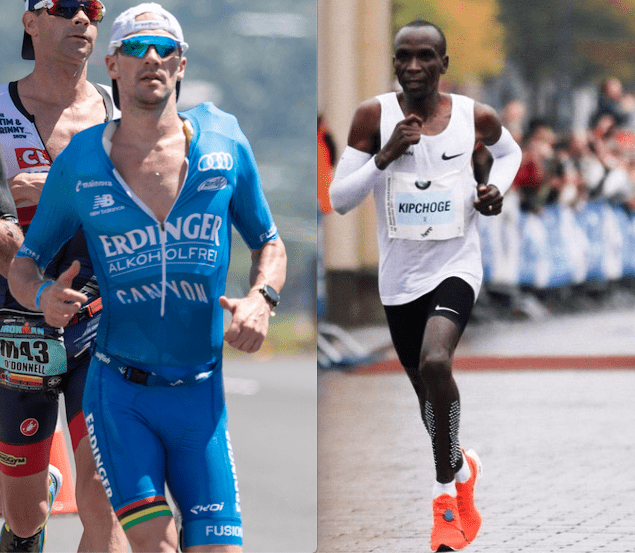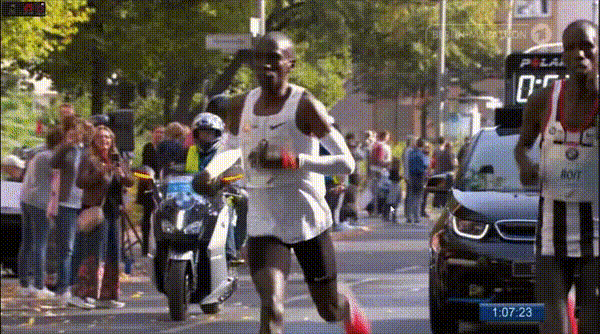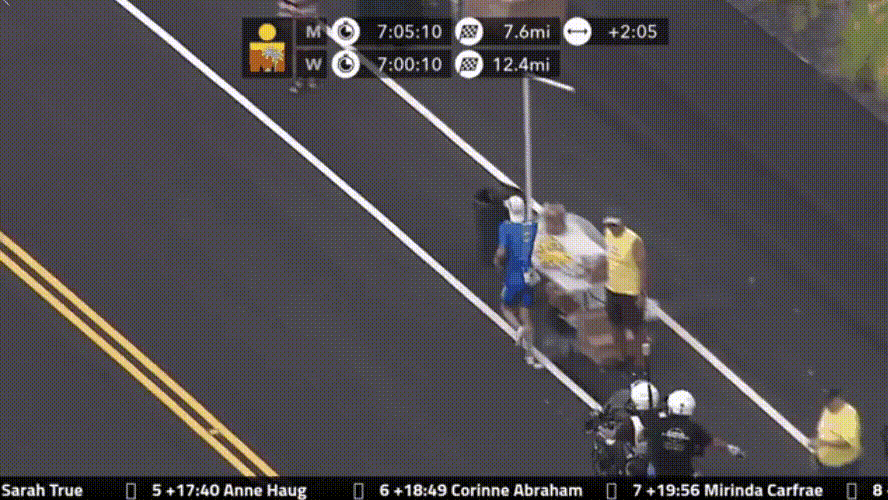Kipchoge vs. Lange aid station techniques
Lets break down the aid station maneuvers of two different athletes: pro marathoners and pro triathletes

Last fall featured two of the premier endurance sporting events on the global calendar. The September 16 Berlin Marathon was followed less than a month later by the Hawaii Ironman on October 13.
Berlin is arguably more important than any running world championship, given the depth of the pro field and how frequently world records are broken there. It has emerged as the place to set a world record (or a personal best) for a few reasons. Firstly, it is nearly pancake flat. Secondly, it starts in the morning (approximately 9 a.m.) during the fall season. This means racing temperatures are normally around 15C, which is nearly perfect. The 2018 race featured Eluid Kipchoge setting a new world record with a finishing time of 2:01:39. Lets now look at his aid station technique during that 2018 race and then compare to triathlon aid stations.
Notice how Kipchoge carefully grabs his Maurten sports drink bottle and sips without spilling a drop. During a marathon he is consuming roughly 100 g of carbohydrates per hour. Perfectly executed aid station form!
Triathlon aid stations during the run segment are a bit more “informal.” During an Ironman, the pros are normally running during the daytime highs in the early afternoon. At Ironman Hawaii this can mean temperatures above 30 C and high humidity. Also worth considering is the pros will have raced for approximately five hours before starting a marathon in an Ironman. All of these factors contribute to less than efficient aid station performances. For an example we look no further than the World Champ himself Patrick Lange at Ironman Hawaii, less than a month after Kipchoge’s Berlin World Record.
With a significant lead and about 5K to the finish, Lange runs through aid stations like he’s on fire and in need of an all-you-can-eat buffet. Notice that instead of taking a cup of Coke from a volunteer, he grabs the entire 2 L bottle and then cools himself down with it. This was on his way to setting the all-time course record at Ironman Hawaii.
Also of note is that instead of wearing minimal clothing during an elite marathon, pro triathletes often opt for longer clothes. This can add more sun protection (and unique storage options!)



